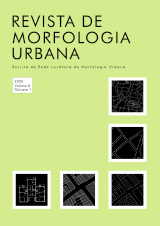Abstract
The smart city construct as well as the new city science movement are currently being subject of an incredible amount of research from multiple disciplines in a transdisciplinary fashion at international research centers. This new discipline claims to pursue more efficient and egalitarian cities by using technology; nevertheless, hi-tech tools have been applied mostly in developed countries throughout the world. Yet… is this a science that can be used to solve the existing problems in emergent economies? Most developing economies are struggling to narrow the gap of inequity in a context of limited resources, such as digital breaches, low educational levels, insecurity, disinformation and in general a huge array of unsatisfied needs and we argue that coping with these should be part of the new disciplines’s paradigm. The paper conducts an analysis of “best practices” by worldwide known research centers, and then explores possibilities of implementing the city science tools in Latin American cities.
References
Albino V., Berardi, U., & Dangelico, R.M. (2015) Smart Cities: Definitions, Dimensions, Performance, and Initiatives. Journal of Urban Technology, 22(1), 3-21.
Batty, M., et al. (2012) Smart cities of the future. The European Physical Journal Special Topics, 214(1), 481-518.
Batty, M. (2013) The New Science of Cities, Cambridge Massachusetts: MIT.
Bergamini, E. (2020) How COVID-19 is laying bare inequality. Disponível em: https://www.bruegel.org/2020/03/how-covid-19-is-laying-bare-inequality/ [Consultado em: 18 de novembro de 2019].
Workshop BID (2019) Presentación de Resultados del Toolkit: Big Data a partir del uso de datos de celulares aplicados a la movilidad. Disponível em: https://www.youtube.com/watch?v=Ksq62-5PeCE[Consultado em: 18 de novembro de 2019].
Castells, M. (2010) Globalization, Networking, Urbanization: Reflections on theSpatial Dynamics of the information Age. Urban Studies, 47(13) 2737-2745.
Center for Spatial Planning, Analytics and Visualization (2020) Georgia Institute of Technology - College of Design. Disponível em: https://cspav.gatech.edu/ [Consultado em: 14 de janeiro de 2020].
City Science, Media Lab (2019) Overview: Massachusetts Institute of Technology, MIT.Disponível em: https://www.media.mit.edu/groups/city-science/overview/ [Consultado em: 18 de novembro de 2019].
Chen, C. et al. (2016) The promises of big data and small data for travel behavior (aka human mobility) analysis. Transportation Research Part C, 68, 285-299. http://dx.doi.org/10.1016/j.trc.2016.04.005.
Datta, A., & Odendaal, N. (2019) Smart cities and the banality of power. Environment and Planning D: Society and Space, 37(3), 387-392. doi:https://doi.org/10.1177/0263775819841765.
Eisler, R. (1998). El Cáliz y la Espada. México, Editorial Pax, Cuatro Vientos Editorial.
Gobierno de México (2019). México Conectado. Disponível em: https://www.gob.mx/mexicodigital/articulos/mexico-conectado [Consultado em: 18 de novembro de 2019].
Gollub, U. (2016). How the future will look like. Disponível em: https://www.linkedin.com/pulse/how-future-look-like-udo-gollub/ [Consultado em: 18 de novembro de 2019].
Gómez et. al. (2019). Proyecto curricular para la conformación del programa de Maestría en Ciencia de la Ciudad (MCCd). Universidad de Guadalajara. Documento de trabalho não publicado.
Harari, Y.N. (2018) De animales a Dioses: Breve historia de la humanidad. 12ª. ed., Buenos Aires: Debate.
INEGI, Instituto Nacional de Estadística, Geografía e Informática. (2019). Encuesta Nacional sobre disponibilidad y uso de tecnologías de la información en los hogares (ENDUTIH). Disponível em: https://www.inegi.org.mx/programas/dutih/2019/ [Consultado em: 18 de novembro de 2019].
Merino, J. (2017). México conectado: más internautas, mismas brechas. Horizontal, Enero 25, 2017. Disponível em: https://horizontal.mx/mexico-conectado-mas-internautas-mismas-brechas/[Consultado em:18 de novembro de 2019].
Mitchell, W. (2007). Intelligent Cities. UOC Papers e-Journal on the Knowledge Society. Disponível em: www.uoc.edu/uocpapers/5/dt/eng/mitchell.pdf [Consultado em: 18 de novembro de 2019].
Mumford, L. (1961). The city in history: Its origins, its transformations, and its prospects(Vol. 67). Houghton Mifflin Harcourt.
Prince A. e Jolías L. (2017) Tendencias Tecnológicas. Colección CICOMRA. Cámara de informática y Comunicaciones de la República Argentina. Buenos Aires: Autores de Argentina. Disponível em: https://cicomra.org.ar/documentos/. [Consultado em: 18 de novembro de 2019].
Real Academia Española, RAE (2019) Disponível em: https://dle.rae.es/tecnolog%C3%ADa?m=&e=[Consultado em: 18 de novembro de 2019].
Scott, A. J., (2011). Emerging cities of the third wave. City, 15(3-4), 289-321.
Scott, A. J., (2014). Beyond the Creative City: Cognitive-Cultural Capitalism and the New Urbanism. Regional Studies, 48:4, 565-578.
Shaheen S., & Cohen, A. (2017). Smart Cities and the Future of Transportation. University of California Berkeley. Disponível em: https://www.move-forward.com/smart-cities-and-the-future-of-transportation/[Consultado em: 18 de novembro de 2019].

This work is licensed under a Creative Commons Attribution 4.0 International License.
Copyright (c) 2020 Mayra Gamboa González, Juan Ángel Demerutis Arenas


